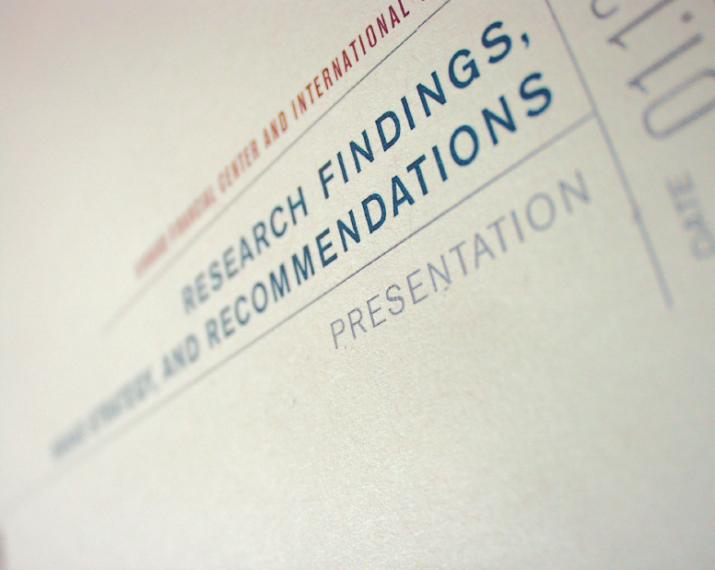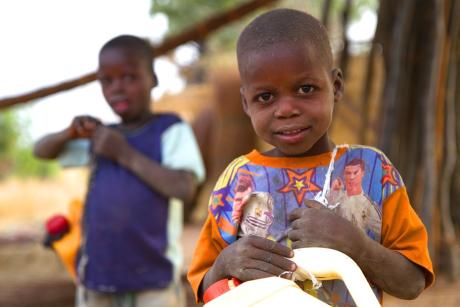
Published October 21, 2014, last updated on April 9, 2018
DGHI professional and graduate global health students have taken their classroom knowledge into the field, developing research studies on topics ranging from infectious disease to nutrition. Today, DGHI is pleased to highlight the publications of former professional and graduate students: Stephen Kimani, Christopher De Boer, Janeil Belle, Aaloke Mody, and Sarah Bartz. The application of their knowledge to important health issues can have a significant impact on the field of global health.
Respondent driven sampling is an effective method for engaging methamphetamine users in HIV prevention research in South Africa
Stephen Kimani, a Master of Science in Global Health alumnus and Clinical Research Coordinator at Duke University School of Medicine, published an article in Elsevier’s Drug and Alcohol Dependence examining the effectiveness of respondent driven sampling (RDS) as a method for engaging methamphetamine users from a peri-urban township in Cape Town in HIV behavioral research. Stephen’s research was part of a larger NIH-funded study led by Christina Meade. The study team recruited 345 methamphetamine users over 6 months after performing formative research to properly identify their recruitment groups. The results from this study showed that RDS is a useful tool for engaging methamphetamine users into HIV prevention research in South Africa. This study also highlighted novel opportunities for harnessing established peer connections through RDS to seek, test, and link to care even the most at-risk methamphetamine smokers in low resource settings.
Prognosis and delay of diagnosis among Kaposi’s sarcoma patients in Uganda: a cross-sectional Study
Master of Science in Global Health alumnus, Christopher De Boer, published an article in Infectious Agents and Cancer investigating the association between primary delay to treatment and the cancer stage of HIV Kaposi’s sarcoma (KS) patients upon diagnosis of the disease by a clinician. Although this association has been studied in developed countries, this was the first study to examine the relationship in low- and middle-income countries. This cross-sectional, prospective study gathered data from 161 patients through their medical charts and standardized interviews at the Uganda Center Institute in Kampala, Uganda over a five-month period. The results of this study show there was a diagnostic delay associated with “poor-risk” stage at diagnosis, which was based on a patient having either “good risk” or “poor risk” in three diagnostic areas. This study also showed a greater likelihood of delay when the patient visited a traditional healer.
Innovative Bridging of the Rural-Urban Divide: Comparison of Scope, Safety, and Impact of Collaborative Rural Surgery Camps and an Urban Surgical Program
In a World Journal of Surgery publication, Janeil Belle, a former student at Duke University School of Medicine, conducted research in India to examine the rural-urban health disparities in surgical health care. This study used a retrospective review of non-ambulatory procedures performed at a rural hospital camp program and at an urban hospital. During this 12-month study, 449 rural surgery camp cases and 344 urban cases were analyzed. This study showed rural surgical camps achieved diagnostic and/or therapeutic goals in 92.2% of procedures and rendered 1.74-2.69 disability adjusted life-years (DALYs) averted per patient. These results suggest that rural hospital surgery camp program can be a safe, effective model when compared against their urban counterpart.
Effects of HIV Infection on the Metabolic and Hormonal Status of Children with Severe Acute Malnutrition
A former Duke medical student, Aaloke Mody, and a former Duke pediatric endocrine fellow, Sarah Bartz, recently co-authored an article in PLoS One and another article the Journal of clinical Endocrinology and Metabolism investigating the effects of HIV infection on the pathophysiology and recovery from children who are malnourished. This prospective cohort study collected samples from 75 severely malnourished Ugandan children at baseline and after 14 days of inpatient treatment. Each patient’s HIV status, CD4 counts, auxologic data, and blood samples were used to analyze metabolic status and responses to nutritional therapy. The results of this student suggest an association between HIV infection and adipose tissue storage and function in the adaptation to malnutrition. Specifically this study found that in malnourished, HIV-infected children, hypoleptinemia and hypoadiponectiemia might contribute to high mortality rates.


